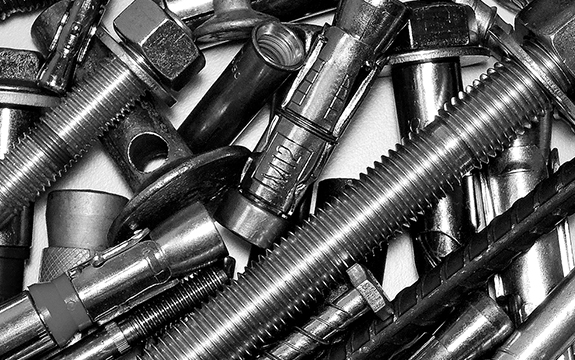Setting standards in concrete

In Summary
- This article featured in Swinburne’s new ‘Research Impact’ magazine, produced in association with Nature Publishing Group
Humdrum they may be, but the steel anchors and fasteners used in the construction industry to attach structural building components to concrete structures literally hold modern society together.
As critical components of construction, guaranteeing the reliability, longevity and safety of such fastenings is essential. It is surprising then that standards for this crucial aspect of construction have often been overlooked, leaving fastener selection and testing open to varying interpretations, until now.
In response to an industry call for guidance and standards, civil engineer Professor Emad Gad from Swinburne University of Technology, with engineers from leading local and international firms, set out to establish a council of industry representatives to ensure a safe uniformity. Thus, the Australian Engineered Fasteners and Anchors Council (AEFAC) was born.
“Members of AEFAC are commercially competitive firms in the market place,” says Professor Gad. “However, within AEFAC, all members work together to develop the industry. Over our first three years, the level of cooperation and collaboration has only increased, with a growing list of achievements and recognition.”
Senior engineer Joe Rametta, from Hilti Australia, which supplies chemical and mechanical anchors to construction companies and is a founding member of AEFAC, says that before AEFAC’s work there was a lot of confusion in the marketplace because engineers couldn’t compare one fixing or anchor to another as they were tested to different criteria. As a result, there had been instances when anchors had failed because the wrong product had been used or poorly installed, he says.
Council members, with input from the wider construction industry, came together to decide on aspects of concrete fasteners requiring standard specification or testing procedures. Researchers at Swinburne then undertake the majority of the research and development with large in-kind support from AEFAC members.
“AEFAC provides us with the platform to develop solutions using our research expertise, academic rigour and university independence, but supported by consultation and input from the end-users of our standards,” says Professor Gad.
Since its inception in 2012, the AEFAC has developed a number of industry tools, including the new Standards Australia Technical Specification SA TS101 for the design of post-installed and cast-in fastenings for use in concrete.
The new Technical Specification has been added to the National Construction Code (NCC), to which every building in the country must comply.
“SA TS101 is a major step forward for the Australian construction industry and will result in improved safety and reliability of structures,” says Professor Gad.
Mr Rametta says design engineers can now compare anchors under the same test criteria. “At the end of the day, you end up with safer buildings, and that was the aim from the start.”
AEFAC, which is based at Swinburne, has also developed a forthcoming program to train and certify individuals who install these fixtures.
“We respond to requests from industry due to their dissatisfaction with existing methods and lack of industry uniformity, and we are seen as the expert body on construction fastenings,” says Professor Gad.

